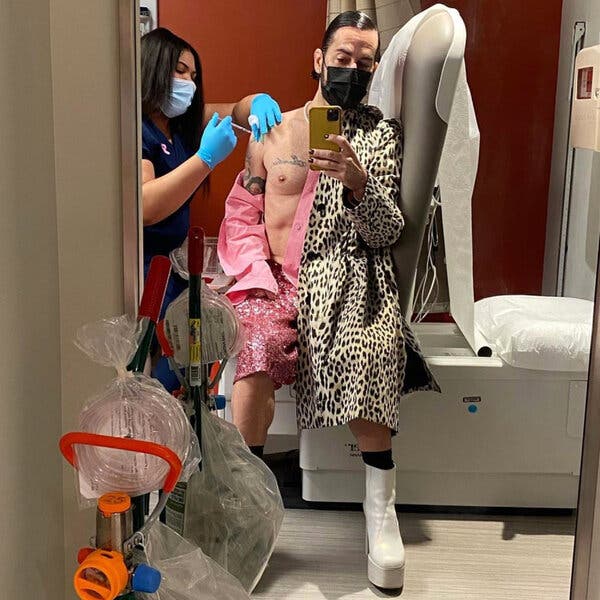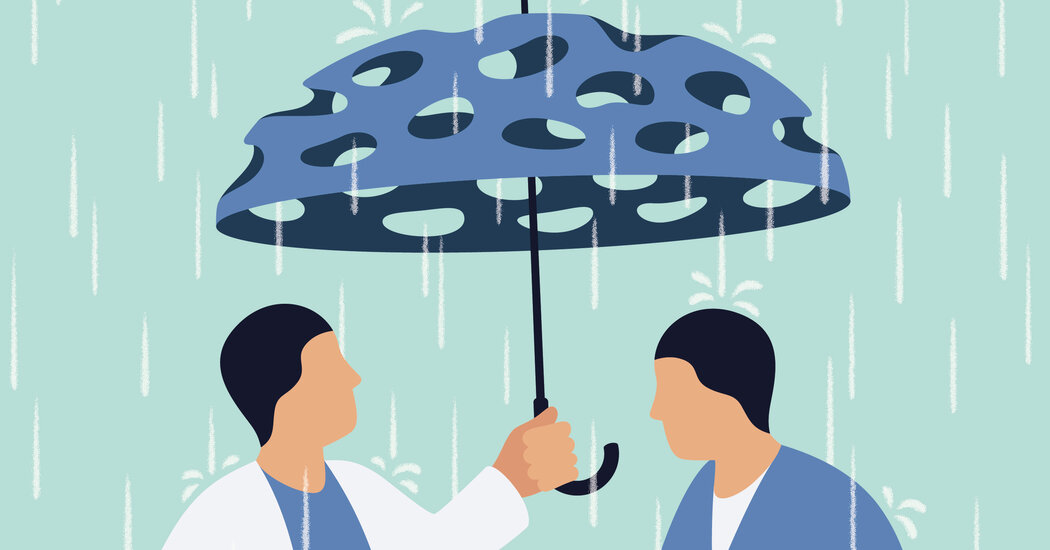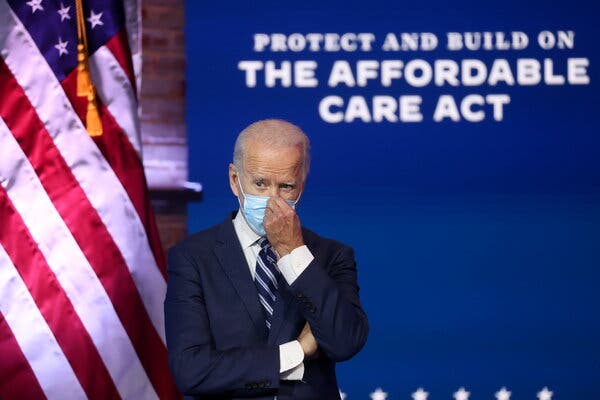Widespread disease outbreaks have the potential to shock societies into new ways of living.This article is part of a series on resilience in troubled times — what we can learn about it from history and personal experiences.Five years ago, I decided to write a novel set in the aftermath of a terrible pandemic.The novel was an alternate history, a revisionist Western set in the 19th century, and I ended up doing copious research on everything from cattle brands to midwifery. But I’m somewhat embarrassed to say now that my research on public health disasters was relatively slight. Essentially, I pulled up a list of flu outbreaks, picked one that best suited my plot (an 1830 pandemic that may have begun in China), and started writing.But as I finished the book, its events collided with the present. I was working through copy-edits in March 2020 when New York City, where I live, began to shut down. Suddenly I had a lot of time, and a lot of motivation, to consider what I had gotten right and wrong about the devastation wrought by disease on a society.In many ways, my imagination had strayed far from reality. For one thing, no known pandemic has ever been as deadly as the one I wrote about, which kills 90 percent of the United States population. But I had one instinct that turned out to be right: that pandemics have the potential to shock societies into new ways of living. The Black Death, for example, led to the end of serfdom and the rise of the middle class in England.But a disease outbreak can also cause governments to double down on repression and bigotry, as when the United States scapegoated Asian-Americans during 19th-century plague epidemics.An artist’s rendering of St. Pancras Smallpox Hospital, circa 1880s, in a tented camp in London.Frank Collins/Buyenlarge, via Getty ImagesHistory can’t tell American policymakers and activists exactly how to respond to Covid-19 — more often, it offers an example of what not to do. Still, outbreaks in 20th-century South Africa, medieval England, ancient Rome and more can offer some lessons for those working to heal the damage of Covid and forge a more just society in its wake.Five years ago, the history of pandemics was a jumping-off point for me — an inspiration, little more. Now it’s something more urgent: an example of what we can dare to hope for in these dark times, as well as what awaits us if we fail to act. Here are some lessons learned.AdaptThe Black Death, a pandemic caused by the bacterium Yersinia pestis that spread across Asia, Africa and Europe beginning in 1346, was “without question the most catastrophic health crisis in recorded history,” Mark Bailey, a historian and the author of “After the Black Death: Economy, Society, and the Law in Fourteenth-Century England,” said in an interview. In England, it killed around 50 percent of the population in 1348 and 1349; in Europe as a whole, estimates range from 30 to 60 percent. The sheer scale of mortality was an enormous shock, though its effects went far beyond that. As Monica Green, a historian of medicine who specializes in medieval Europe, put it, “Who will bring in the harvest if half the people are gone?”Different societies responded in different ways. In many parts of northwestern Europe, such as Britain and what is now the Netherlands, the sudden death of a huge share of working people meant it was easier for the survivors to get work and acquire land. “You get an increase in wealth per head and a reduction in wealth inequality,” Mr. Bailey explained. Economically, at least, “ordinary people are better off.”“Flight of the Townspeople Into the Country to Escape From the Plague,” from 1630. The plague is depicted at far right as a skeleton holding a dagger and an hourglass./Universal Images Group, via Getty ImagesThe reverse was true in much of eastern Europe, where lords consolidated their power over the now-scarce peasantry to reimpose serfdom, forcing them to work the land on terms favorable to landowners. There, inequality flatlined or actually increased in the wake of the plague.There are many competing explanations for the split, but one possibility is that “the Black Death tends to accelerate existing trends,” like a movement toward a less feudal, more consumer-based economy in northern Europe, Mr. Bailey said. But that region didn’t magically become a bastion of equality post-plague — the English government imposed wage caps in the mid-14th century to keep pay from going too high. The result was widespread unrest, culminating in the Peasants’ Revolt of 1381, which brought together people of a wide variety of social backgrounds in an expression of “pent-up frustration” at government mismanagement of the economy, Mr. Bailey said.Over all, if “resilience in a pandemic is coping,” he continued, “economic and social resilience subsequently is adapting.” The modern lesson: “Adapting to the new reality, the new paradigm, the new opportunities, is key.”Fight inequalityThe move toward greater economic equality in England post-plague may have been a bit of an outlier — throughout history, epidemics have tended to intensify existing social inequities.In 1901, for example, when an epidemic of the plague hit South Africa, “thousands of Black South Africans were forcibly removed from Cape Town under the assumption that their free movement was having an effect on the spread of plague within the city,” said Alexandre White, a professor of sociology and the history of medicine whose work focuses on pandemic response. That expulsion laid the groundwork for the racial segregation of the apartheid era.The United States, too, has a history of discriminatory policy during epidemics, including the targeting of Asian-American communities during early 19th- and early 20th-century plague outbreaks in Hawaii and San Francisco, and the sluggish federal response to the H.I.V. epidemic when it appeared to affect primarily L.G.B.T.Q. Americans, Mr. White said. Such decisions have ended up not only widening inequality but also hampering efforts to fight disease — ignoring H.I.V., for example, allowed it to spread throughout the population.A scientist studying the plague at a San Francisco lab in 1961. Smith Collection/Gado/Getty ImagesAnd now, the United States faces a pandemic that has disproportionately sickened and killed Americans of color, who are overrepresented in the essential work force yet less likely to have access to medical care. As federal and state governments manage the vaccine rollout, access to testing and treatment, and economic relief packages, it’s crucial to learn from the past and target policies specifically at reducing the racial and economic inequalities that made the pandemic so devastating in the first place.“If the effects of racism and effects of xenophobia were less systemic within our society, we would likely see fewer deaths as a result of Covid-19,” Mr. White said. “Bigotry is fundamentally bad for public health.”Embrace unexpected innovationEven as pandemics have often re-entrenched old prejudices and forms of marginalization, they’ve also often given rise to something new, especially when it comes to art, culture and entertainment.Ancient Rome, for example, was tormented by epidemics, with one occurring every 15 to 20 years for portions of the fourth, third and second centuries B.C., said Caroline Wazer, a writer and editor who completed a dissertation on Roman public health. At the time, the primary public-health response was a religious one, with Romans experimenting with new rites and even new gods in an attempt to stop the spread of illness. In one case, Ms. Wazer said, with an epidemic dragging on for three years and the public increasingly agitated, the Senate adopted a strange, new ritual from northern Italy: “they bring in actors to perform onstage.” According to the Roman historian Livy, “this is how the Romans get theater,” Ms. Wazer said, though that fact has been debated.A spiritual response to disease brought cultural change to 14th-century England, too. Recalling the mass graves of the Black Death, Britons feared dying without a Christian burial and spending eternity in purgatory, Mr. Bailey said. So they began to form guilds, small religious groups that essentially functioned as “burial insurance clubs,” raising money to give members the proper treatment after death.These guilds hosted parties and other events, and over time there was concern “about boozing of ale going on in and around the church,” Mr. Bailey said. So the guilds began to build their own halls for socializing. Then, during the Reformation in the 16th century, the guilds were dissolved, and the halls became something new: pubs.Indeed, historians have argued that the rise in consumerism and the wealth of ordinary people following the Black Death paved the way for the pub culture for which England remains known today.It would be flippant to call such cultural innovations a “silver lining” of pandemics — after all, plenty of new art forms and social venues have emerged without the catalyst of mass death. It is worth remembering, though, that in the wake of even the most devastating public health disasters, human social life and creativity have re-emerged in new and unexpected ways.“Pandemics are both catastrophes and opportunities,” Mr. Bailey told me. And in the coming years, the world will face the tragic opportunity of rebuilding after Covid-19 — and if we learn the lessons of history, we may be able to do so in a way that’s more fair, more inclusive, and even more joyful than the past we’ve been forced to leave behind.Anna North is a senior reporter at Vox and the author of three novels, including, most recently, “Outlawed.”
Read more →







